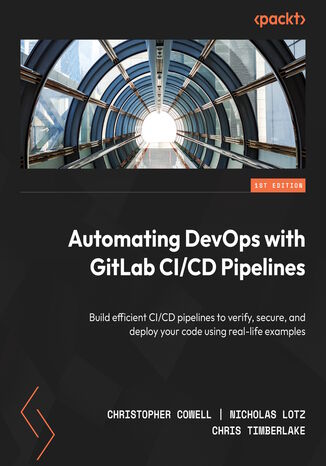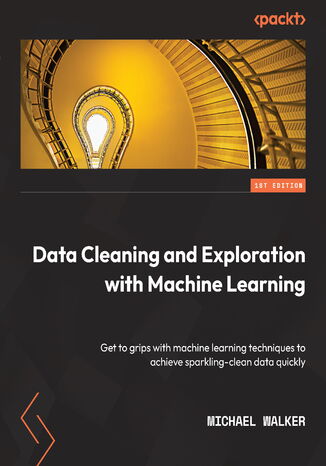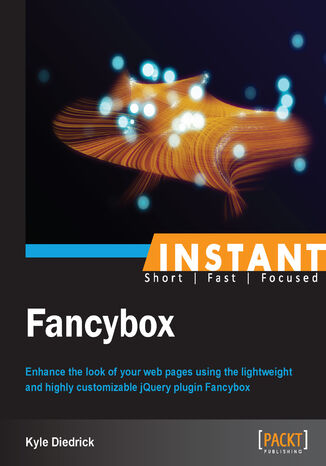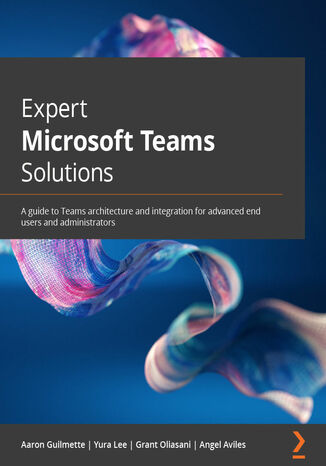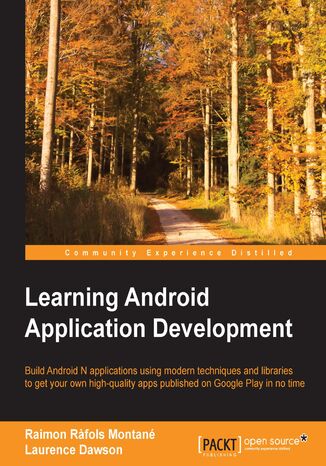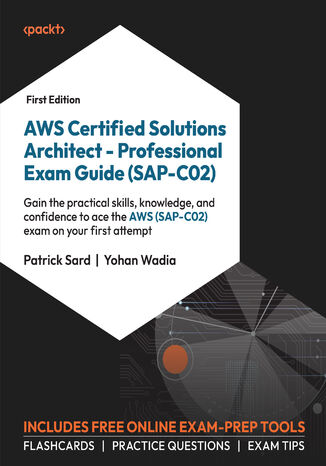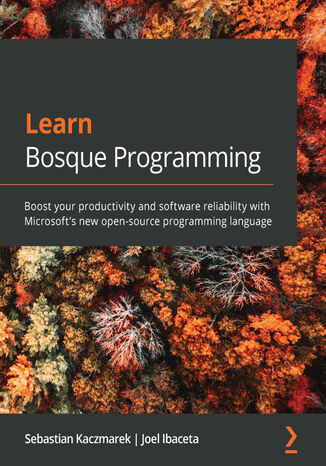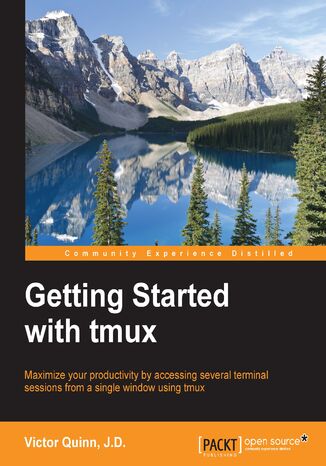Categories
Ebooks
-
Business and economy
- Bitcoin
- Businesswoman
- Coaching
- Controlling
- E-business
- Economy
- Finances
- Stocks and investments
- Personal competence
- Computer in the office
- Communication and negotiation
- Small company
- Marketing
- Motivation
- Multimedia trainings
- Real estate
- Persuasion and NLP
- Taxes
- Social policy
- Guides
- Presentations
- Leadership
- Public Relation
- Reports, analyses
- Secret
- Social Media
- Sales
- Start-up
- Your career
- Management
- Project management
- Human Resources
-
For children
-
For youth
-
Education
-
Encyclopedias, dictionaries
-
E-press
- Architektura i wnętrza
- Health and Safety
- Biznes i Ekonomia
- Home and garden
- E-business
- Ekonomia i finanse
- Esoterecism
- Finances
- Personal finance
- Business
- Photography
- Computer science
- HR & Payroll
- For women
- Computers, Excel
- Accounts
- Culture and literature
- Scientific and academic
- Environmental protection
- Opinion-forming
- Education
- Taxes
- Travelling
- Psychology
- Religion
- Agriculture
- Book and press market
- Transport and Spedition
- Healthand beauty
-
History
-
Computer science
- Office applications
- Data bases
- Bioinformatics
- IT business
- CAD/CAM
- Digital Lifestyle
- DTP
- Electronics
- Digital photography
- Computer graphics
- Games
- Hacking
- Hardware
- IT w ekonomii
- Scientific software package
- School textbooks
- Computer basics
- Programming
- Mobile programming
- Internet servers
- Computer networks
- Start-up
- Operational systems
- Artificial intelligence
- Technology for children
- Webmastering
-
Other
-
Foreign languages
-
Culture and art
-
School reading books
-
Literature
- Antology
- Ballade
- Biographies and autobiographies
- For adults
- Dramas
- Diaries, memoirs, letters
- Epic, epopee
- Essay
- Fantasy and science fiction
- Feuilletons
- Work of fiction
- Humour and satire
- Other
- Classical
- Crime fiction
- Non-fiction
- Fiction
- Mity i legendy
- Nobelists
- Novellas
- Moral
- Okultyzm i magia
- Short stories
- Memoirs
- Travelling
- Narrative poetry
- Poetry
- Politics
- Popular science
- Novel
- Historical novel
- Prose
- Adventure
- Journalism, publicism
- Reportage novels
- Romans i literatura obyczajowa
- Sensational
- Thriller, Horror
- Interviews and memoirs
-
Natural sciences
-
Social sciences
-
School textbooks
-
Popular science and academic
- Archeology
- Bibliotekoznawstwo
- Cinema studies
- Philology
- Polish philology
- Philosophy
- Finanse i bankowość
- Geography
- Economy
- Trade. World economy
- History and archeology
- History of art and architecture
- Cultural studies
- Linguistics
- Literary studies
- Logistics
- Maths
- Medicine
- Humanities
- Pedagogy
- Educational aids
- Popular science
- Other
- Psychology
- Sociology
- Theatre studies
- Theology
- Economic theories and teachings
- Transport i spedycja
- Physical education
- Zarządzanie i marketing
-
Guides
-
Game guides
-
Professional and specialist guides
-
Law
- Health and Safety
- History
- Road Code. Driving license
- Law studies
- Healthcare
- General. Compendium of knowledge
- Academic textbooks
- Other
- Construction and local law
- Civil law
- Financial law
- Economic law
- Economic and trade law
- Criminal law
- Criminal law. Criminal offenses. Criminology
- International law
- International law
- Health care law
- Educational law
- Tax law
- Labor and social security law
- Public, constitutional and administrative law
- Family and Guardianship Code
- agricultural law
- Social law, labour law
- European Union law
- Industry
- Agricultural and environmental
- Dictionaries and encyclopedia
- Public procurement
- Management
-
Tourist guides and travel
- Africa
- Albums
- Southern America
- North and Central America
- Australia, New Zealand, Oceania
- Austria
- Asia
- Balkans
- Middle East
- Bulgary
- China
- Croatia
- The Czech Republic
- Denmark
- Egipt
- Estonia
- Europe
- France
- Mountains
- Greece
- Spain
- Holand
- Iceland
- Lithuania
- Latvia
- Mapy, Plany miast, Atlasy
- Mini travel guides
- Germany
- Norway
- Active travelling
- Poland
- Portugal
- Other
- Przewodniki po hotelach i restauracjach
- Russia
- Romania
- Slovakia
- Slovenia
- Switzerland
- Sweden
- World
- Turkey
- Ukraine
- Hungary
- Great Britain
- Italy
-
Psychology
- Philosophy of life
- Kompetencje psychospołeczne
- Interpersonal communication
- Mindfulness
- General
- Persuasion and NLP
- Academic psychology
- Psychology of soul and mind
- Work psychology
- Relacje i związki
- Parenting and children psychology
- Problem solving
- Intellectual growth
- Secret
- Sexapeal
- Seduction
- Appearance and image
- Philosophy of life
-
Religion
-
Sport, fitness, diets
-
Technology and mechanics
Audiobooks
-
Business and economy
- Bitcoin
- Businesswoman
- Coaching
- Controlling
- E-business
- Economy
- Finances
- Stocks and investments
- Personal competence
- Communication and negotiation
- Small company
- Marketing
- Motivation
- Real estate
- Persuasion and NLP
- Taxes
- Social policy
- Guides
- Presentations
- Leadership
- Public Relation
- Secret
- Social Media
- Sales
- Start-up
- Your career
- Management
- Project management
- Human Resources
-
For children
-
For youth
-
Education
-
Encyclopedias, dictionaries
-
E-press
-
History
-
Computer science
-
Other
-
Foreign languages
-
Culture and art
-
School reading books
-
Literature
- Antology
- Ballade
- Biographies and autobiographies
- For adults
- Dramas
- Diaries, memoirs, letters
- Epic, epopee
- Essay
- Fantasy and science fiction
- Feuilletons
- Work of fiction
- Humour and satire
- Other
- Classical
- Crime fiction
- Non-fiction
- Fiction
- Mity i legendy
- Nobelists
- Novellas
- Moral
- Okultyzm i magia
- Short stories
- Memoirs
- Travelling
- Poetry
- Politics
- Popular science
- Novel
- Historical novel
- Prose
- Adventure
- Journalism, publicism
- Reportage novels
- Romans i literatura obyczajowa
- Sensational
- Thriller, Horror
- Interviews and memoirs
-
Natural sciences
-
Social sciences
-
Popular science and academic
-
Guides
-
Professional and specialist guides
-
Law
-
Tourist guides and travel
-
Psychology
- Philosophy of life
- Interpersonal communication
- Mindfulness
- General
- Persuasion and NLP
- Academic psychology
- Psychology of soul and mind
- Work psychology
- Relacje i związki
- Parenting and children psychology
- Problem solving
- Intellectual growth
- Secret
- Sexapeal
- Seduction
- Appearance and image
- Philosophy of life
-
Religion
-
Sport, fitness, diets
-
Technology and mechanics
Videocourses
-
Data bases
-
Big Data
-
Biznes, ekonomia i marketing
-
Cybersecurity
-
Data Science
-
DevOps
-
For children
-
Electronics
-
Graphics/Video/CAX
-
Games
-
Microsoft Office
-
Development tools
-
Programming
-
Personal growth
-
Computer networks
-
Operational systems
-
Software testing
-
Mobile devices
-
UX/UI
-
Web development
-
Management
Podcasts
Christopher Cowell, Nicholas Lotz, Chris Timberlake
Developers and release engineers understand the high stakes of building, packaging, and deploying code efficiently. Ensuring that your code is fast, secure, and functionally correct can be a time-consuming and complex task. GitLab CI/CD pipelines simplify these tasks, enabling automation and seamless deployment.Automating DevOps with GitLab CI/CD Pipelines starts with the fundamentals of Git and GitLab, guiding you through committing and reviewing code. You'll learn how to set up GitLab Runners to execute and autoscale CI/CD pipelines, configure pipelines for different stages of the software development lifecycle, and analyze pipeline results in GitLab. As you progress, you'll gain expertise in deploying code across environments, integrating GitLab with Kubernetes and Terraform, triggering pipelines, and improving pipeline performance. This book also includes troubleshooting techniques, best practices, real-world use cases, and self-assessments to reinforce key CI/CD concepts and help you prepare for GitLab-related interviews and certifications.By the end of this book, you'll have the skills to build and automate CI/CD pipelines in GitLab, streamline DevOps workflows, and deploy high-quality, secure code with confidence.
Many individuals who know how to run machine learning algorithms do not have a good sense of the statistical assumptions they make and how to match the properties of the data to the algorithm for the best results.As you start with this book, models are carefully chosen to help you grasp the underlying data, including in-feature importance and correlation, and the distribution of features and targets. The first two parts of the book introduce you to techniques for preparing data for ML algorithms, without being bashful about using some ML techniques for data cleaning, including anomaly detection and feature selection. The book then helps you apply that knowledge to a wide variety of ML tasks. You’ll gain an understanding of popular supervised and unsupervised algorithms, how to prepare data for them, and how to evaluate them. Next, you’ll build models and understand the relationships in your data, as well as perform cleaning and exploration tasks with that data. You’ll make quick progress in studying the distribution of variables, identifying anomalies, and examining bivariate relationships, as you focus more on the accuracy of predictions in this book.By the end of this book, you’ll be able to deal with complex data problems using unsupervised ML algorithms like principal component analysis and k-means clustering.
Fancybox is a lightweight, highly customizable jQuery plugin for displaying modal dialogs. Fancybox is incredibly versatile; it works with all sorts of different content including images, videos, iFrames, custom HTML, and even SWF files. Fancybox is also very easy to customize, making it a great tool for any pop-up-like feature.Instant Fancybox is a hands-on guide which shows you how to use and customize the Fancybox plugin. The book provides step-by-step tutorials covering everything from simple installation to complex settings and features. This makes it a great way to get familiar with and ultimately master the Fancybox plugin.This book walks you through how to get the most out of the Fancybox plugin for jQuery, starting with the installation of the plugin and how to work with the JavaScript events that Fancybox triggers.You will learn everything you need to know about setting up Fancybox to show images, image galleries and slideshows, videos, and other content. You will also learn about the settings available within Fancybox and how to leverage them to make the Fancybox popup do exciting things. The Fancybox plugin has much to offer, and this book covers all of the features it provides. This book will provide you with all the information you will need to use the Fancybox plugin effectively.
Aaron Guilmette, Yura Lee, Grant Oliasani, Angel Aviles
Microsoft Teams is an invaluable tool that can integrate various Microsoft products into a single convenient hub. But making the most of it often requires expert help and hours spent on calls and live chats. If you’d rather have all the information you need to make the most of Teams in one place, then this book is for you.Written by two Microsoft technical specialists who have spent years helping clients find the best way to utilize Teams, this book will help you understand Teams as a whole — from architecture and collaboration through to apps and voice. You’ll study the platform from the perspective of the end user as well as the administrator, gaining insights and learning from real-life examples.You’ll tackle adopting, implementing, and administering Teams efficiently, which will help you realize its full potential. From setup and deployment to modernizing your organization’s chat and voice infrastructure, you’ll get plenty of useful and actionable tips as you progress.By the end of your journey through this book, you’ll be able to design and implement the most important and exciting aspects of Microsoft Teams help your organization work more efficiently.
Raimon Rafols Montane, Laurence Dawson
The mobile app market is huge. But where do you start? And how you can deliver something that takes Google Play by storm? This guide is the perfect route into Android app development – while it’s easy for new apps to sink without a trace, we’ll give you the best chance of success with practical and actionable guidance that will unlock your creativity and help you put the principles of Android development into practice.From the fundamentals and getting your project started to publishing your app to a huge market of potential customers, follow this guide to become a confident, creative and reliable mobile developer. Get to grips with new components in Android 7 such as RecyclerView, and find out how to take advantage of automated testing, and, of course, much, much more. What are you waiting for? There’s never been a better time – or a better way – to get into Android app development.
Known for its difficulty and ranking among the highest-paying IT certifications, the AWS Certified Solutions Architect Professional (SAP-C02) certification demands significant hands-on experience for success. This comprehensive guide reinforces your knowledge and enhances your skills in various solution architectures and services. Additionally, you’ll gain lifetime access to supplementary practice resources such as mock exams, flashcards, and exam tips from experts.Aligned with exam objectives, this AWS certification study guide helps you assess your knowledge through timed mock tests that simulate exam conditions. Beyond exam preparation, you’ll develop advanced skills in designing distributed systems on AWS cloud and become proficient in providing architectural recommendations for complex application implementation, and enhancing infrastructure efficiency. As you advance, you’ll gain insights into how to foster unique thinking and factor diverse considerations while architecting solutions. You’ll also get to grips with designing multi-tier applications, deploying enterprise-grade operations, and migrating complex applications to AWS.By the end of this book, you’ll be able to design and deploy innovative solutions on AWS, unlocking new opportunities and driving success in the dynamic world of cloud computing.
Sebastian Kaczmarek, Joel Ibaceta
Bosque is a new high-level programming language inspired by the impact of structured programming in the 1970s. It adopts the TypeScript syntax and ML semantics and is designed for writing code that is easy to reason about for humans and machines. With this book, you'll understand how Bosque supports high productivity and cloud-first development by removing sources of accidental complexity and introducing novel features.This short book covers all the language features that you need to know to work with Bosque programming. You'll learn about basic data types, variables, functions, operators, statements, and expressions in Bosque and become familiar with advanced features such as typed strings, bulk algebraic data operations, namespace declarations, and concept and entity declarations. This Bosque book provides a complete language reference for learning to program with Bosque and understanding the regularized programming paradigm. You'll also explore real-world examples that will help you to reinforce the knowledge you've acquired. Additionally, you'll discover more advanced topics such as the Bosque project structure and contributing to the project.By the end of this book, you'll have learned how to configure the Bosque environment and build better and reliable software with this exciting new open-source language.

